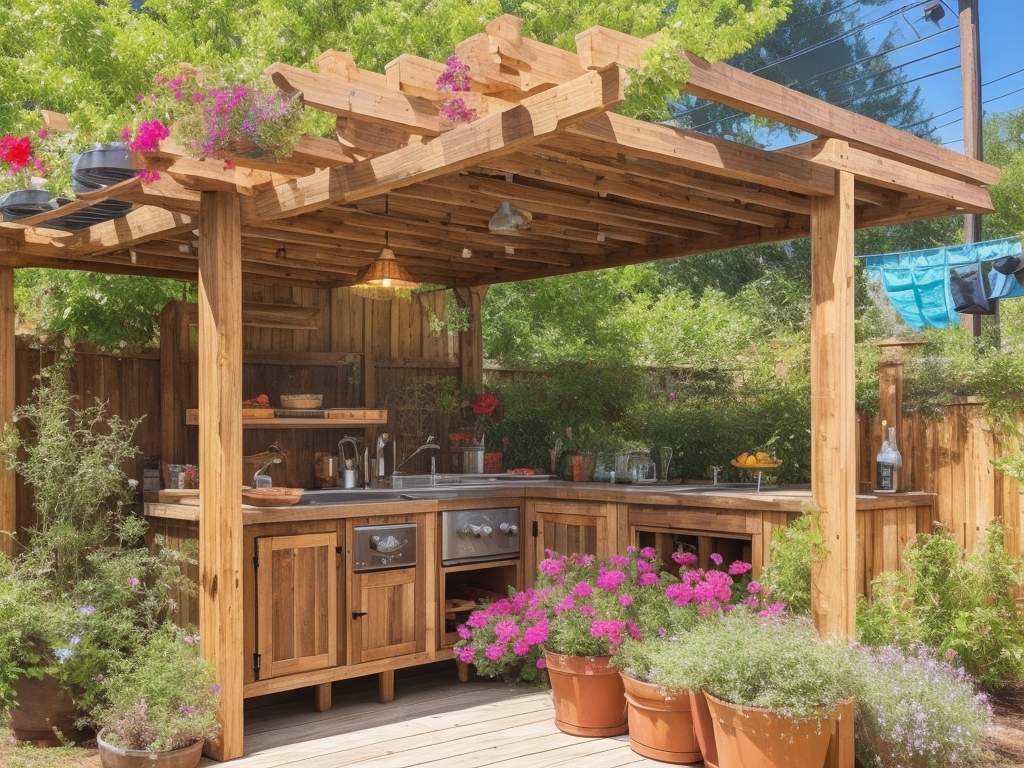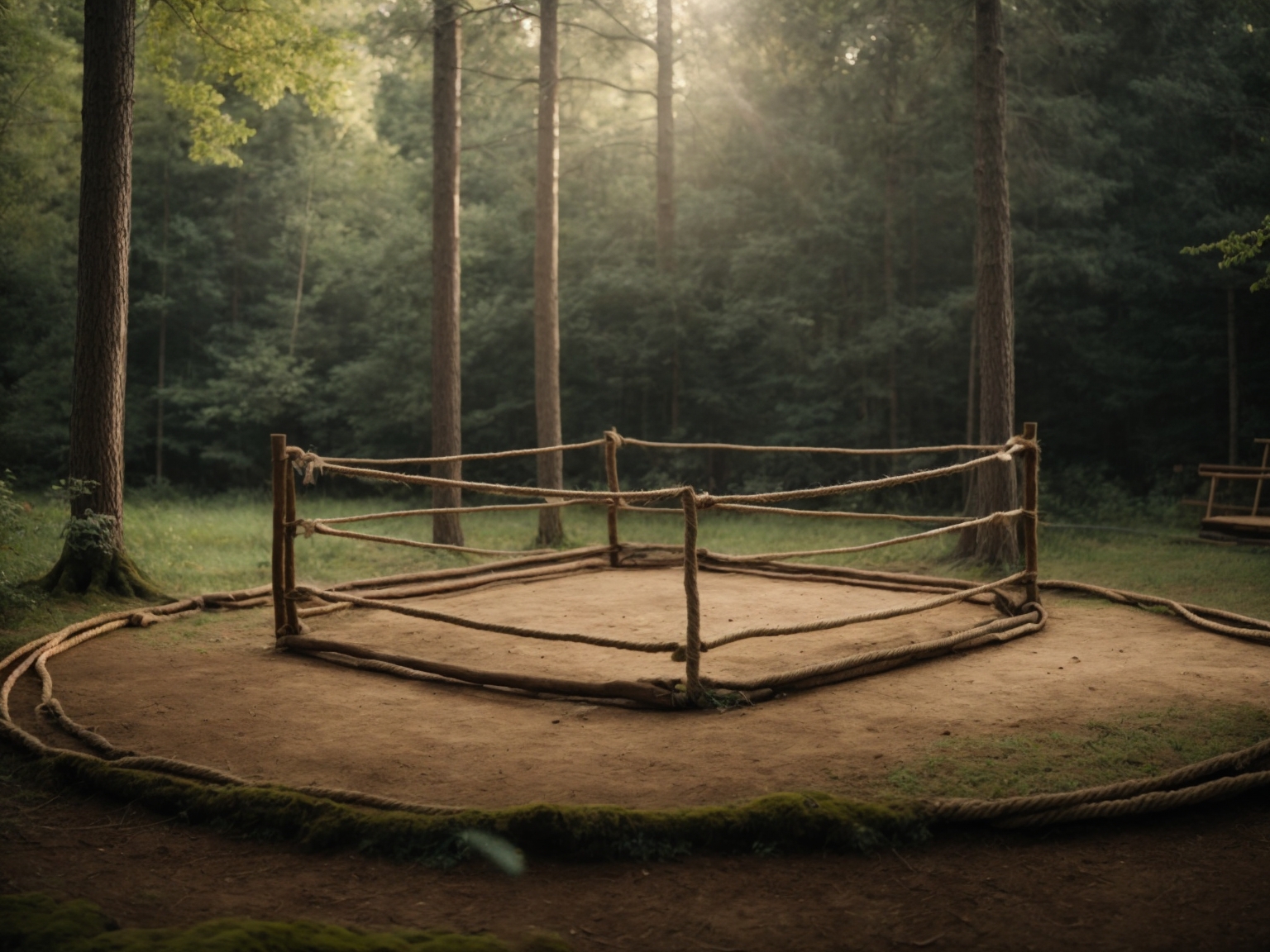How Do I Build a Retaining Wall in My Backyard? Step-by-Step DIY Guide
Picture transforming your backyard into a stunning oasis where every inch feels purposeful and polished. Building a retaining wall isn’t just about holding back soil—it’s about crafting a beautiful, functional space that adds value and charm to your home. You might think it’s a complex task, but with the right approach, it’s surprisingly doable.
Picture sturdy stones or sleek blocks stacking up to create terraces that prevent erosion and open up new gardening possibilities. Beyond aesthetics, a well-built retaining wall can protect your landscape from water damage and give you extra usable space for relaxing or entertaining. Ready to roll up your sleeves and turn your outdoor vision into reality? Let’s jump into how you can build a retaining wall that stands strong and looks amazing.
Understanding the Basics of Retaining Walls
Understanding what a retaining wall really is helps you build one that lasts and looks great. Retaining walls act as barriers that hold back soil, preventing erosion and managing water flow in your backyard’s landscape.
What Is a Retaining Wall?
A retaining wall is a solid structure built to resist the lateral pressure of soil pushing against it. It’s usually made from materials like concrete, stone, timber, or brick. Think of it as a muscle that holds the earth in place, stopping soil from sliding or washing away. In places where your yard slopes steeply or where rain tends to pool, a retaining wall works by creating a level terrace — this prevents landslides or muddy messes after heavy storms. Without one, your soil may erode and damage your garden or foundation. Experienced landscapers often recommend incorporating drainage systems within retaining walls to prevent pressure build-up from trapped water—a crucial detail many miss until problems arise.
Benefits of Building a Retaining Wall in Your Backyard
Building a retaining wall transforms your yard beyond function, boosting its appearance and value. It expands usable space by leveling areas suitable for gardens, patios, or play zones, making your backyard more enjoyable and practical. Plus, it combats soil erosion effectively, a major concern after periods of heavy rain or snowmelt.
The wall also controls water drainage, redirecting runoff safely away from structures and preventing costly water damage. Picture your backyard as a ship navigating rough weather—the retaining wall acts like a sturdy hull, shielding your land from the relentless forces of nature.
From a financial perspective, a well-constructed retaining wall increases property value by creating a polished, landscaped look that appeals to buyers. But, remember that poorly planned walls can fail and cause damage, so planning and durable materials are key. Consider consulting local building codes and professionals, particularly for taller or complex walls.
By understanding the vital function and benefits of retaining walls, you equip yourself with knowledge to make smarter choices when designing and building your backyard feature. What might seem like just a wall can become one of your landscape’s strongest assets.
Planning Your Retaining Wall Project
Begin by understanding your backyard’s unique layout, material options, and the exact dimensions your retaining wall requires. Careful planning lays the foundation for a wall that not only supports but enhances your space’s beauty and function.
Assessing Your Backyard Terrain
Identify slope steepness, soil type, and drainage patterns in your backyard. Steeper slopes or clay-heavy soil usually demands stronger support, like reinforced concrete or stone, to hold back pressure efectively. Walk your yard during or after rain to notice water flows that might cause erosion. Mark spots where water pools or runs off quickly, since managing these zones ensures wall durability. If your terrain has uneven spots or existing landscaping features, consider how your wall integrates with them rather than disrupts them. For example, a retaining wall curved to match a garden bed can become a seamless part of your landscape rather than a stark barrier.
Choosing the Right Materials
Pick materials that suit your terrain, desired look, and budget. Concrete blocks offer durability and consistent shapes, ideal for precise construction, but natural stone brings timeless elegance and blends effortlessly with greenery. Timber suits softer, rustic settings but may not last as long in wetter climates. Consider your local climate; freeze-thaw cycles can crack some materials, so research their resilience. Consult manufacturers’ warranties and case studies to compare lifespan and maintenance needs. For instance, homeowners in Northern states reported concrete blocks lasting over 30 years with minimal upkeep, according to a 2023 survey from the National Building Council.
Determining Wall Height and Length
Your retaining wall’s size hinges on your backyard’s slope and purpose. Walls taller than 4 feet generally require engineering input or permits due to increased pressure and safety risks. Measure the total length needed by tracing the slope’s contour or the desired garden edge. Remember that longer walls need adequate drainage solutions to prevent water buildup behind them, which can cause failures. Ask your local building authority about regulations on wall height, setbacks, and structural requirements, especially if you live in areas with strict zoning laws. Balancing size with safety and aesthetics helps ensure your wall functions well and complements your outdoor space.
Planning thoroughly avoids costly fixes later, so take time to investigate terrain characteristics, material benefits, and appropriate dimensions. Your backyard wall can be a standout feature, merging function and design with careful attention and the right resources.
Step-by-Step Guide to Building a Retaining Wall
Building a retaining wall involves a series of carefully planned steps, each essential for creating a durable and visually appealing structure in your backyard. Follow these steps to turn your landscape vision into reality while preventing common pitfalls.
Preparing the Site and Excavation
Begin by marking the area where your retaining wall will stand. Clear vegetation, rocks, and debris from the site to ensure a stable foundation. Excavate a trench below ground level; its depth typically equals the height of your planned wall’s base plus 4 to 6 inches for gravel. For example, a 2-foot wall usually requires a trench depth of about 10 inches. This trench must be level, as uneven bases cause structural weakness. It’s crucial to check for underground utilities before digging to avoid unexpected disruptions. Remember, without solid groundwork, the entire wall risks shifting or collapsing, which translates into costly repairs.
Installing the Base and Drainage System
Lay a 4 to 6-inch layer of compacted gravel or crushed stone in the excavated trench to form the base. This base supports the wall and facilitates drainage, preventing water buildup behind the wall that could cause pressure or erosion. Incorporate perforated drainage pipes behind the gravel, positioned at the wall’s footing, sloping them gently downhill to direct water away efficiently. Without this drainage system, hydrostatic pressure may build, pushing the wall outward over time. Experts from the National Concrete Masonry Association emphasize that poorly drained retaining walls fail three times faster than those with proper drainage.
Building the Wall Structure
Depending on your material choice—concrete blocks, natural stone, or timber—stack the units carefully on your prepared base. Use a level to maintain even courses and stagger joints for strength. For concrete block walls, apply appropriate masonry adhesive or mortar between blocks to enhance stability. Install reinforcement like geogrids or rebar for walls over three feet tall. Always follow manufacturer guidelines and local building regulations, as omitting reinforcements can lead to structural failure. Keep in mind that each added course increases lateral pressure; plan accordingly. It’s like baking a layered cake—if your base isn’t firm and your layers aligned, the whole cake might tumble.
Backfilling and Compacting Soil
After building the wall, backfill soil behind it incrementally in 6 to 8-inch layers. Use free-draining materials such as gravel or coarse sand near the wall to reduce water pressure. Compact each layer using a hand tamper or mechanical plate compactor to eliminate air pockets that could cause settling or shifting. Avoid using clay-heavy soils for backfill, as they retain water and increase pressure against the wall. As you backfill, ensure the soil slopes slightly away from the wall to promote surface drainage. Neglecting compaction or proper backfill materials turns your retaining wall into a ticking time bomb, vulnerable to collapse during heavy rains.
| Step | Key Actions | Importance | Example Depth/Thickness |
|---|---|---|---|
| Site Preparation | Clear, mark, excavate trench | Stable base; avoid utility interference | 10 inches for 2-foot wall |
| Base & Drainage | Compact gravel base; install perforated pipe | Supports wall; prevents hydrostatic pressure | 4-6 inches gravel; sloped drainage pipe |
| Wall Structure | Stack blocks/stones; reinforce as needed | Structural integrity; longevity | Reinforce walls >3 feet |
| Backfilling & Compacting | Backfill in layers; use gravel/sand; compact | Reduces pressure; prevents settling | Layers 6-8 inches thick |
Implementing these techniques transforms soil into a reliable guardian of your backyard’s shape and function. Approach your retaining wall project methodically, and your landscape gains stability and charm that lasts decades.
Tips for Long-Lasting Retaining Walls
Building a retaining wall that stands the test of time involves more than stacking stones or placing bricks. You ensure durability by focusing on key factors such as drainage and maintenance. These elements protect your wall from the hidden forces that threaten its stability.
Proper Drainage and Water Management
Water pressure is a wall’s silent enemy. When rainwater collects behind your wall, it pushes against the structure, causing cracks or collapse over time. Installing a drainage system is not optional but essential. Use perforated pipes behind the wall to guide water away. Layer gravel behind the wall material to help flow and prevent saturation. These strategies dissipate the water’s force, reducing the risk of failure. Picture water as a crowd pushing against a barrier; without exits, pressure builds until the wall gives way. Local building departments often provide guidelines on drainage requirements — ignoring these may void warranties or compliance. For example, homeowners in rainy climates who neglect drainage often face costly repairs within five years, a preventable outcome with simple proper drainage measures.
Maintenance and Inspection
Even the strongest walls require upkeep. Inspect your retaining wall at least twice a year, especially after heavy rain or freeze-thaw cycles that can loosen materials. Look for signs like bulging, cracks, or tilting. Take action immediately to address minor issues; repairing small cracks or re-compacting backfill stops worsening conditions. Clearing debris from drainage pipes ensures water flows freely. For instance, an unnoticed clogged drainage pipe behind a stone wall caused undermining of soil, leading to a sudden collapse in a suburban backyard. Regular maintenance prevents such incidents. Remember, skipping inspections is like ignoring a car’s warning lights — problems worsen silently then become crises. Create a maintenance schedule and document observations to track changes over time.
You enhance the lifespan and performance of your retaining wall by mastering drainage and maintenance. The balance between construction quality and ongoing care separates walls that last decades from those that fail prematurely. Take these steps for your backyard’s enduring beauty and safety.
Conclusion
Building a retaining wall in your backyard is a rewarding project that boosts both function and style. With careful planning and attention to detail, you can create a structure that stands strong against soil pressure and water challenges.
By choosing the right materials, following proper construction steps, and maintaining your wall over time, you’ll enjoy a durable feature that enhances your outdoor space. Taking these steps ensures your backyard stays beautiful and safe for years ahead.
- When Is the Best Season for Dog Training in the US? Guide to Year-Round Success - November 5, 2025
- Why Choose an In-Ground Pool: Top Benefits for Your Home & Lifestyle - November 5, 2025
- Where Can I Advertise Driveway Cleaning Locally? Top Effective Spots to Reach Homeowners - November 5, 2025



